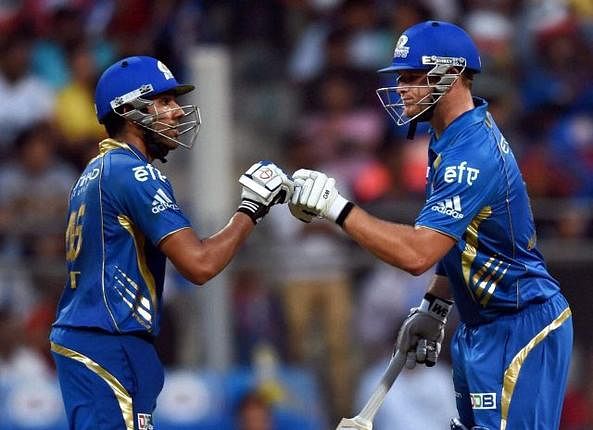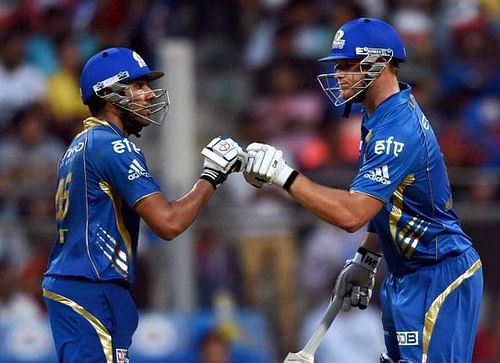
IPL 2014: The run-rate situation from Mumbai Indians vs Rajasthan Royals clarified

The last league match of this season’s IPL - Mumbai Indians vs Rajasthan Royals - witnessed the most dramatic turnaround ever possible for the Mumbai Indians as they clinched their qualification to the playoffs with a six off James Faulkner, who has lost his reputation as a death over specialist this season.
At one point, the situation was all but lost for Mumbai when they failed to get to the target of 190 within 14.3 overs which was the deadline for them to edge past Royals into the Eliminator. However, a sensational six from Aditya Tare took the defending champions through as they bettered the net run rate (NRR) of the Royals with the score at 195 from 14.4 overs.
Here’s the reason why it was possible:
It is not the target, but the final score that is taken into account for NRR calculations. The number of deliveries to chase down the target was 87 for Mumbai prior to the target being 190.
However, the chasing team - if they take a few extra deliveries to get home - can still push their NRR up if they manage a final score that is sufficiently higher by hitting a boundary.
Mumbai Indians were actually ahead of Rajasthan Royals' NRR when they were level on scores at 189, but had Mumbai only managed to get the winning run by a single, they would have fallen behind the opposition.
Since they consumed one extra ball, 191 was their new target to achieve a higher NRR. As they needed just the one run to win, they were restricted with the only option of going for a boundary – running two was ruled out.
However, had the delivery 14.4 been a dot ball, they would have still been in the game. A 4 or a 6 from either of the last two balls of the 15th over would have also seen Mumbai qualify.
Assume if they’d managed only dots for next three deliveries (14.4, 14.5 and 14.6), then it would have still been possible for Mumbai to qualify with a six from the first ball of the 16th over too. If this had happened, Mumbai would have ended with a run-rate of 0.006 higher than Rajasthan.
It is also to be noted that if Faulkner had bowled a dot ball on 14.4, then he could have just bowled a wide on 14.5 and that would have been enough to see the Royals through to the playoffs. A wide on the 14.4 delivery was out of the question though, as that ball wouldn’t have been counted and the Indians would have reached the target in the original slot of 14.3 overs.